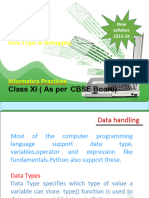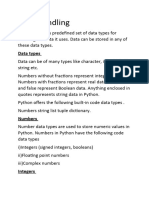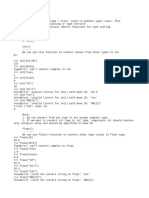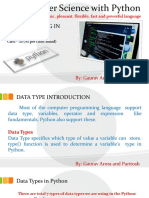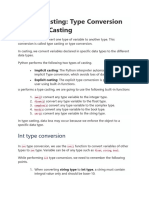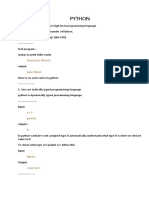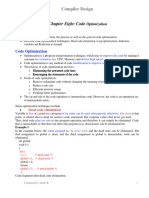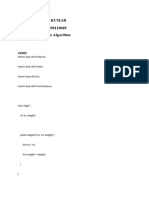0% found this document useful (0 votes)
12 views8 pagesPractice Py
The document provides an overview of various data types in Python, including int, float, complex, bool, and str, along with their characteristics and conversion methods. It explains slicing of strings, type casting, and the immutability of fundamental data types. Additionally, it discusses operators in Python and highlights the language's features and usage.
Uploaded by
S N KCopyright
© © All Rights Reserved
We take content rights seriously. If you suspect this is your content, claim it here.
Available Formats
Download as DOCX, PDF, TXT or read online on Scribd
0% found this document useful (0 votes)
12 views8 pagesPractice Py
The document provides an overview of various data types in Python, including int, float, complex, bool, and str, along with their characteristics and conversion methods. It explains slicing of strings, type casting, and the immutability of fundamental data types. Additionally, it discusses operators in Python and highlights the language's features and usage.
Uploaded by
S N KCopyright
© © All Rights Reserved
We take content rights seriously. If you suspect this is your content, claim it here.
Available Formats
Download as DOCX, PDF, TXT or read online on Scribd
/ 8



